Samsung Galaxy Fit Review
Samsung Galaxy Fit Review
Fine for basic step tracking but pricey and inaccurate
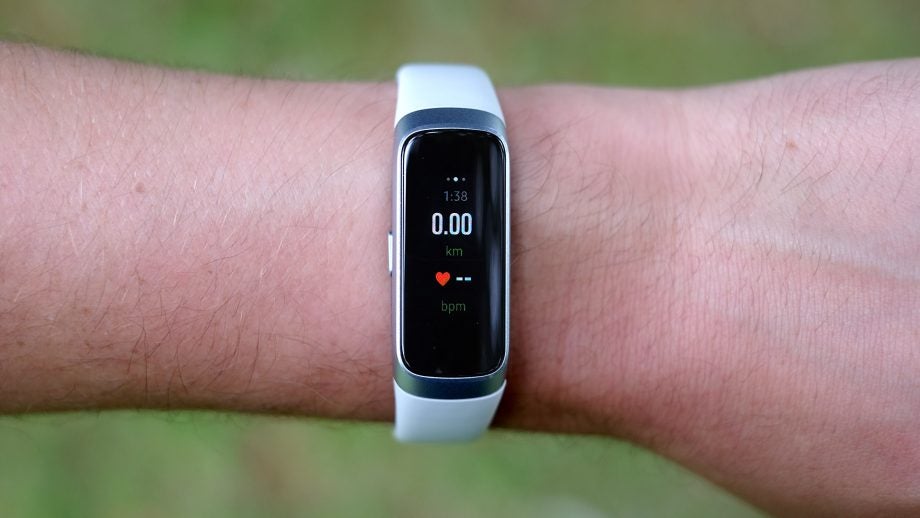
Verdict
The Galaxy Fit is fine for the step counting basics but falters when asked to track runs. You can get much better for a similar price.
Pros
- Screen bright enough for the outdoors
- Some glass and metal parts
- Good battery life
Cons
- Slightly clunky interface nav
- No GPS or Connected GPS
- Distance tracking is poor
- Fiddly strap
Key Specifications
- Review Price: £89
- 240 x 120 pixel 0.95in OLED screen
- Up to 7-day battery life
- Wireless charger dock
- Heart rate sensor
- Notifications
- Bluetooth
What is the Samsung Galaxy Fit?
The Samsung Galaxy Fit is one of the most accessible Samsung wearables yet.
It doesn’t have an unusually large screen like the Gear Fit2, and doesn’t aim for full smartwatch appeal like the Galaxy Watch. This is the closest you can get to a Fitbit made by Samsung.
However, it falls behind in a few areas that it should be able to nail, given its £95 asking price. Unlike the Huawei Band 3 Pro and Fitbit Inspire HR, the Galaxy Fit lacks any form of GPS. And poor tracking of runs and jogs using its motion sensors alone mean this is only really suitable for basic step counting.
Related: Best Fitness Tracker 2019
That may do the trick in the cheaper Samsung Galaxy Fit E – the monochrome version of this band, but not at almost £100.
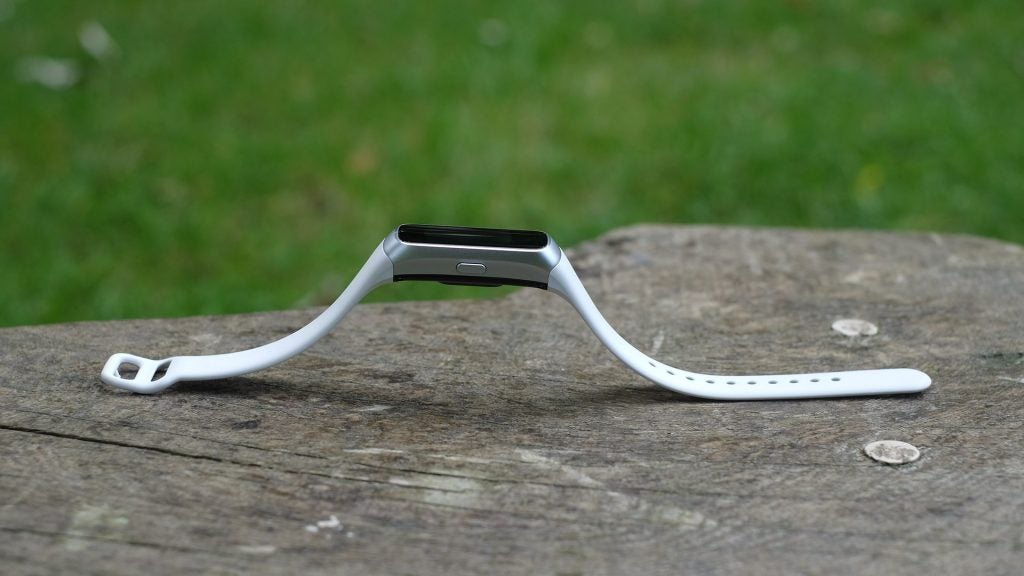
The Fit has a charming minimalism to its look
Design – Samsung goes full Fitbit
The Samsung Galaxy Fit is a lean fitness band that seems an obvious alternative to the Fitbit Inspire HR and Huawei Band 3 Pro. It has a classic “step counter” look. You can wear it every day without people assuming you’re training for a marathon or are going to start spouting off about your “personal best” run times.
It seems higher-end than the Fitbit Inspire HR in several key ways too. The Fitbit has a charming minimalism to its look but is all-plastic. There are some higher-end parts here.
Related: Best Smartwatch 2019
The Samsung Galaxy Fit’s screen is glass, less likely to pick up grazes from light contact with objects, and the casing is anodised aluminium. These instantly tell you this is not a bottom-rung tracker.
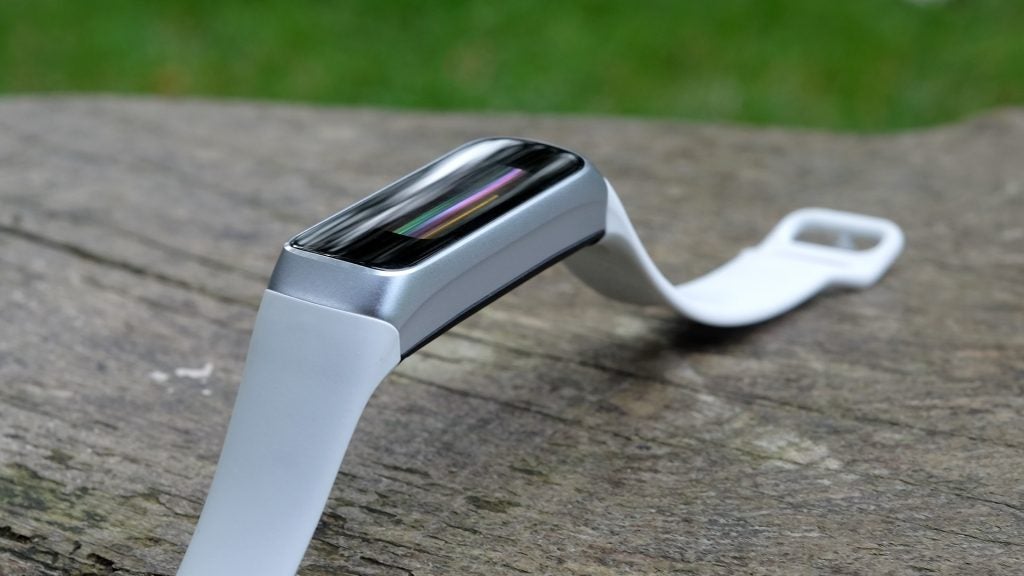
The Samsung Galaxy Fit’s glass screen makes it less likely to pick up scratches
You’ll likely notice the colour before either of these, though. The Samsung Galaxy Fit has a full-colour display. The Fitbit Inspire HR’s is monochrome. Side by side, you can only conclude Fitbit cheaped out a little with its latest bands.
The Samsung Galaxy Fit is comfortable too, like just about every fitness band in this class. However, it does have one of the most fiddly and annoying straps going.
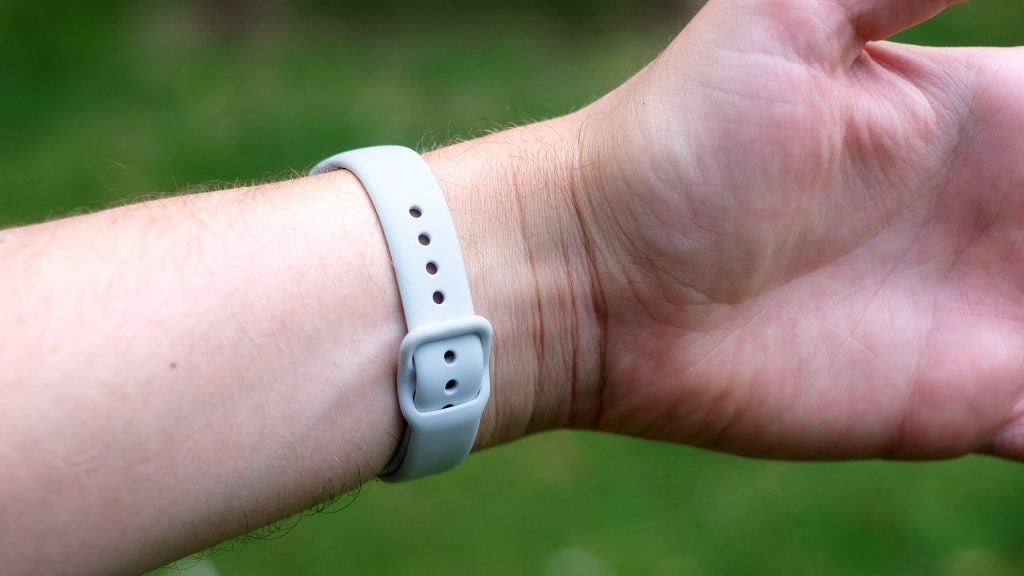
The Samsung Galaxy Fit is comfortable but its strap is fiddly and annoying
You have to hook the end of the strap underneath the other half while it’s on your wrist, which starts to feel like a chore if you don’t intend to wear the Samsung Galaxy Fit 24/7 (until its battery needs charging, that is).
I assume Samsung uses this style because it looks good. There’s no excess strap to flap around for a start. But I much prefer the standard watch-style approaches Fitbit and Huawei use in the Inpire HR and Band 3 Pro.
Screen – The Galaxy Fit can handle bright days if you know how to use it
The Samsung Galaxy Fit has a 0.95-inch 240 x 120 pixel OLED screen. If it seems like a downgrade from something like the Fit2, that’s because it is. But, then again, the Galaxy Fit’s initial price is a lot lower too.
There’s a big chunk of black border around the actual display panel but you’ll only really notice it when the Fit catches the light at an angle. Interestingly (well, for some) you can make out the border of the panel more clearly here than in the Huawei Band 3 Pro. This is likely because Samsung’s screen architecture has more layers, which end up reflecting small amounts of light.
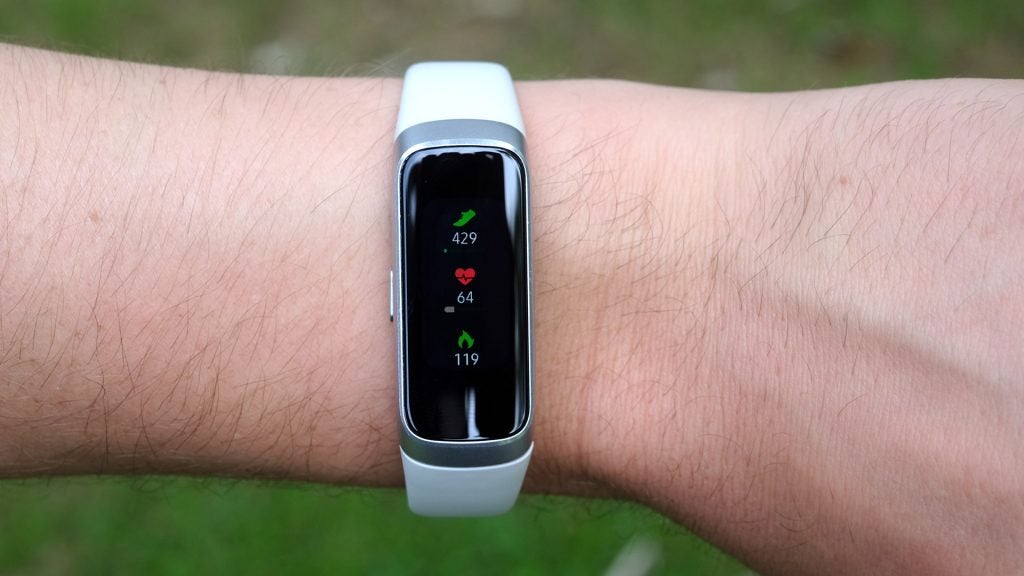
The Samsung Galaxy Fit’s screen is sharp, bright and can handle sunny days
Its maximum brightness can handle sunny days too, although you do need to manually set this with a swipe and a couple of taps. A full auto-brightness mode no longer seems like too much to ask for in a £100 wearable but they are not really used in bands of this category yet.
Related: Samsung Galaxy Watch Active Review
How many watch faces can you choose from? There are 24 but as most of these are variations on a theme it’s more truthful to call it a library of seven.
Two of these have an analogue face. The others are digital, with different fonts and info fields scattered around.
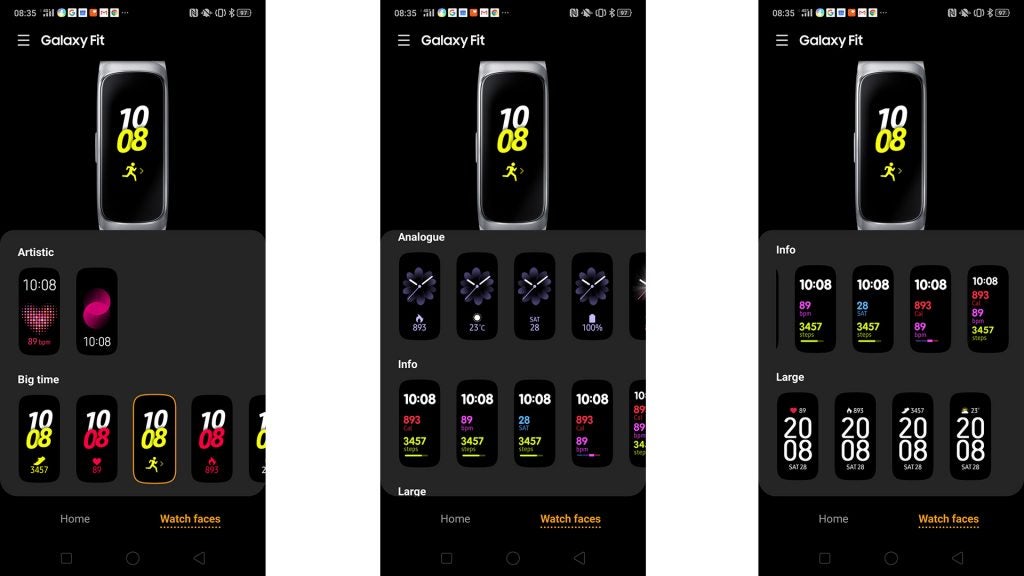
The Samsung Galaxy Fit has seven different faces to choose from, each with various colour options
As none of the most “artistic” Samsung Galaxy Fit faces are all that inspiring, my personal favourite is the face with bold two-tone lettering. It’s not too bland and you can choose the info field to sit below the time: your steps, heart rate, calories, the weather, date or you can make this area a shortcut to start a tracked exercise.
Fitness tracking – The Samsung Galaxy Fit thinks 5K is 4K
Here’s where we stumble into the Samsung Galaxy Fit’s one major issue and it’s a rather important one. Given the band is almost twice the price of the Fit E, you might assume it is meant for more serious tracking but it isn’t.
I’d only buy the Samsung Galaxy Fit for simple step counting. Treat it like one of the basic Fitbits and it won’t disappoint.
You can actively track activities, including walking, running, cycling, swimming and general gym work. Start a session and you’ll see the same kind of stats a proper sports watch offers.
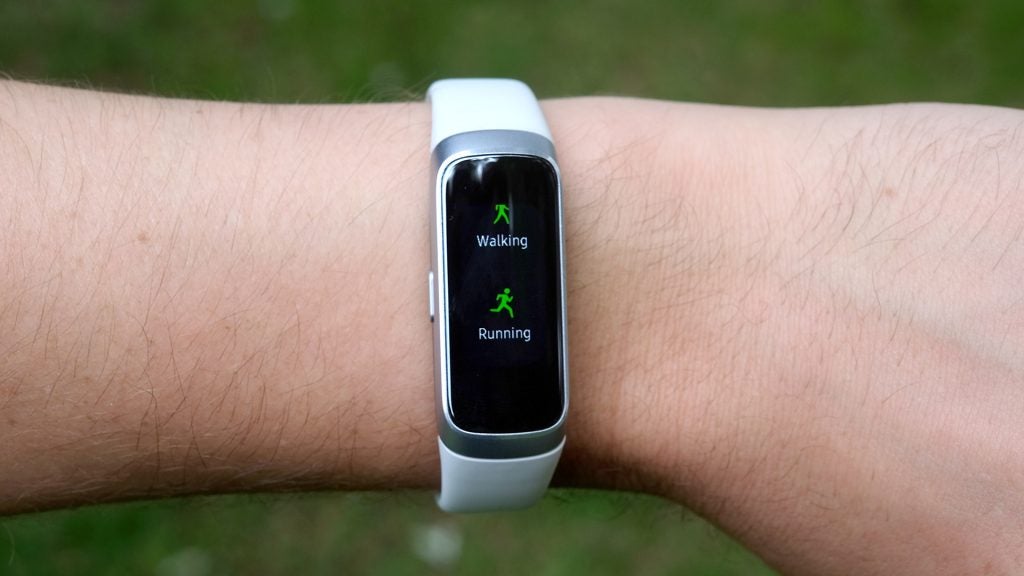
The Samsung Galaxy Fit can actively track activities including walking and running
The distance readings the Samsung Galaxy Fit records are way off the mark, though. I took the band out for a fistful of runs, comparing the readings to those of the Fitbit Inspire HR, Huawei Band 3 Pro and Garmin Fenix 5. Each time the Samsung was roughly 20% under.
A 5K run becomes a 4K run. And while that may make the marathon you’re training for easier in the long run, because you’ll have over-trained for months, it means the Samsung Galaxy Fit is useless for actual performance monitoring.
Why is it so off the mark? The Samsung Galaxy Fit does not have GPS or Connected GPS – which is where a tracker wirelessly steals your phone’s own GPS readings over Bluetooth. At the same price, the Fitbit Inspire HR offers Connected GPS, while the Huawei Band 3 Pro boasts full-on baked-in GPS.
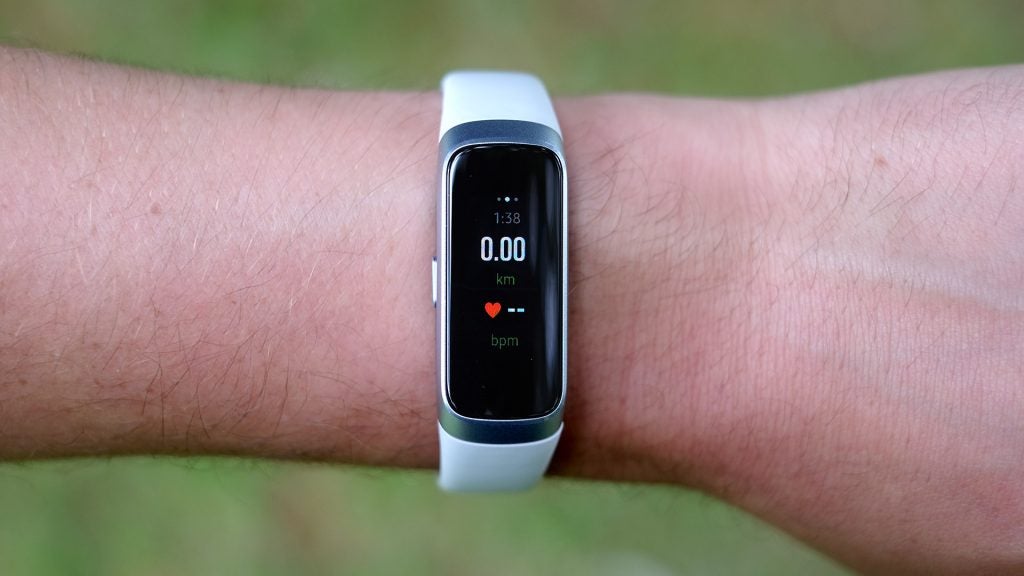
The Samsung Galaxy Fit’s heart rate readings are decent for a wrist-worn sensor
This alone doesn’t explain the poor readings, though. Other brands offer pretty decent distance estimates from bands that only have an accelerometer and gyroscope, suggesting Samsung just hasn’t aced its algorithms yet. Most recent Samsung wearables had either GPS or Connected GPS, reducing the need to develop rock-solid tracker algorithms.
No GPS also means no maps of your runs. I enjoy looking at the things even though I tend to run in the same areas again and again.
This also means the Galaxy Fit is not a substantively better tracker than the much, much cheaper Galaxy Fit E. It just looks nicer.
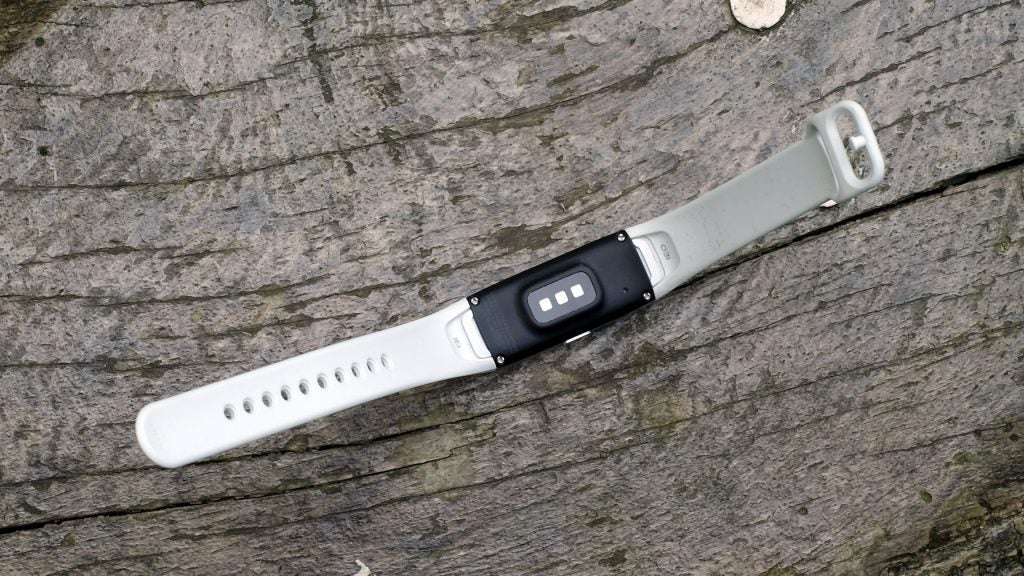
The Samsung Galaxy Fit records your heart rate measurements in the Galaxy wearable app
After that battering, there are some nice things to say about the Galaxy Fit’s tracking. Its step count readings are perfectly solid, and heart rate readings are decent for a wrist-worn sensor. Dig around in the Galaxy wearable app and you’ll see an option to monitor heart rate “frequently” or constantly.
The Samsung Health app, where your data ends up, does not let you look into much fine-grain detail on your heart rate and so on. But the app is quite slick and inviting. You can also use it to track your weight, water consumption and sleep. And like Fitbit, there are also online challenges that let you get motivated without needing a gang of friends also using the app.
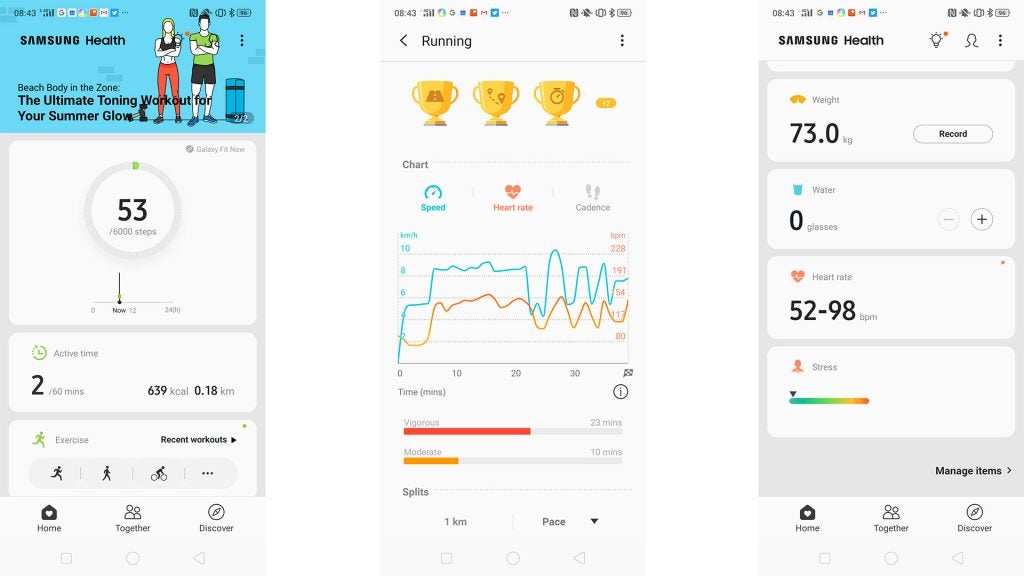
The Samsung Health app doesn’t go into the fine detail but it’s well designed and easy to use
Interface and features – The Samsung Galaxy Fit and app aren’t all that slick, but easy enough to use
The Samsung Galaxy Fit’s own interface is fairly simple. You flick right and left to cycle through the various interface screens, which Samsung calls “widgets”.
Samsung’s companion app lets you change the order of them and you may want to do so as flicking through this interface feels slightly stilted. I couldn’t quite put my finger on why until I directly compared the Fit to the Huawei Band 3 Pro, whose software has been in development for several years.
This is a gesture-based interface but it doesn’t feel like one because the various pages are discrete states linked by animated transitions (that’s the impression you get anyway). There’s none of the sense of inertia you get with an Android phone or even the Huawei Band 3 Pro.
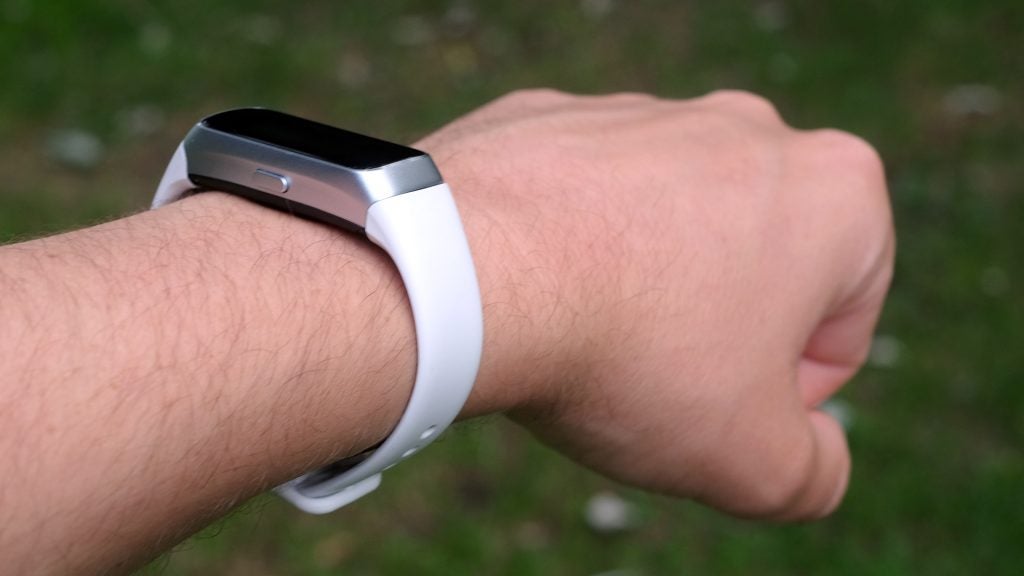
The Fit’s interface is fairly basic and not as slick as other fitness trackers at this price
It’s an issue of price, much like the GPS problem. Reach £100 and you’re entering the realm of much slicker or capable wearables, and the Samsung Galaxy Fit doesn’t offer enough of either.
There are some extra features, though, the staples of a good fitness band. The Samsung Galaxy Fit monitors your stress level – a heart rate-based reading, and tracks your sleep. One of the other widgets tells you the weather in your current location.
The Samsung Galaxy Fit can also handle notifications. You can choose the apps that get a pass, and the vibration motor gives you a little buzz as they arrive. The app also lets you tweak behaviour, so you can choose block them coming through when actively using your phone, for example.
It’s typical notification handling for a small band like this, though. You can only read one message at a time, with WhatApp for example, and you can’t read multiple notifications as a mini stream. The Galaxy Watch Active lets you do this, although the Huawei and Fitbit rivals don’t. Of the Huawei/Samsung/Fitbit trio of options you have at the price, Samsung’s notification handling feels the most accomplished.
Battery life – The Samsung Galaxy Fit will last four to five days before having to be recharged
Samsung says the Galaxy Fit’s 120mAh battery lasts up to seven days. This seems to be based on leaving some of the more advanced features switched off, like the “always-on” display mode for exercise and the constant HR tracking.
However, I still see around four to five days’ use between charges, which instantly gives it a distinct appeal over the two-day Samsung Galaxy Fit Active. The Galaxy Fit E’s claims are similar.
Putting this in a wider context, I find the Fitbit Inspire HR lasts less long, around three to four days. And the Huawei Band 3 Pro can last a full week, no problem. The Huawei’s longevity is heavily dependent on how much you use its GPS, mind. It can drain the battery in seven hours, as it is quite a power-hungry feature.
The Samsung Galaxy Fit uses a little wireless dock for charging. It’s contoured and magnetised, so holds the band in place fairly reliably. However, it is not all that fast to charge and takes a couple of hours to do the job
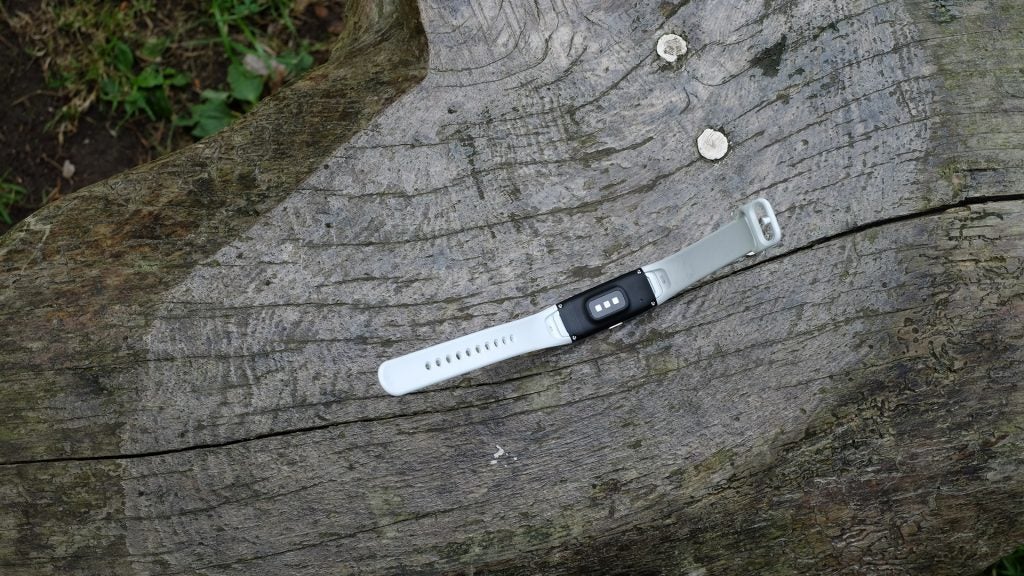
The Galaxy Fit’s battery will last four to five days but it takes a couple of hours to recharge from empty
Should I buy the Samsung Galaxy Fit?
The Samsung Galaxy Fit makes sense. Samsung has dropped the idea of making slightly odd and unusual wearables and switched to making models much closer to those of its competitors.
It’s a bit more upscale than the Fitbit Inspire HR in display and build, and is comfortable aside from an annoying strap.
Look a little closer, though, and it doesn’t make all that much sense when at around £100 you have that Fitbit, a much cheaper Huawei and an entry-level Garmin like the Forerunner 35 to consider.
The Samsung Galaxy Fit has active fitness tracking models for all sorts of exercise. But a lack of any sort of GPS. What’s more, dodgy accelerometer-based distance readings mean it works best as a basic step counter and no more. £90 seems a lot to pay for one of those.
Verdict
The Galaxy Fit is fine for the step counting basics but falters when asked to track runs. You can get better for a similar price.


